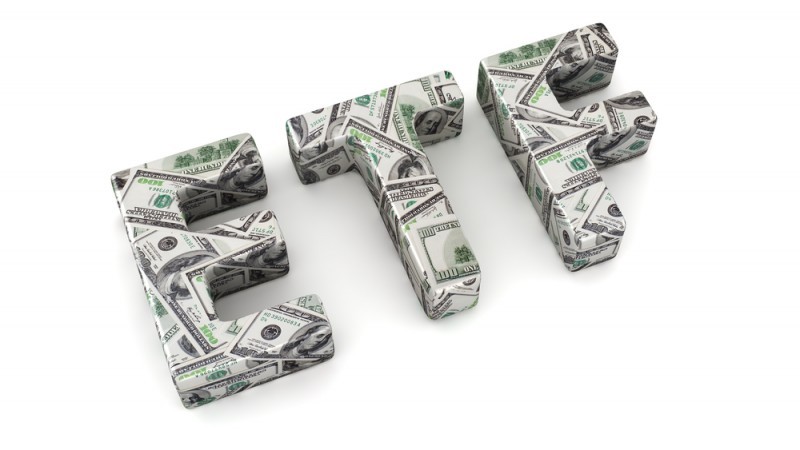ETFs Wide world of exchangetraded funds requires navigation for investors The Washington Post
Post on: 2 Май, 2015 No Comment

Choose one: How would you best describe exchange-traded funds?
D. Aggressive
E. All of the above
As you might suspect, E is correct. Exchange-traded funds — or ETFs, as they’re known — come in multiple varieties to match differing investor preferences and needs. Let’s take a quick look at how ETFs compare with traditional mutual funds, and then we’ll look at the types of ETFs and how they might fit in your portfolio.
ETFs vs. traditional mutual funds
At their core, ETFs and traditional mutual funds serve the same purpose: They allow savers to pool their money together to invest more efficiently and effectively. Investors buy shares in an ETF or a traditional mutual fund, which hires a professional investment manager to put the money to work in the markets.
ETFs and traditional mutual funds also both provide daily liquidity, so it’s easy for investors in either vehicle to convert their holdings to cash.
Where they differ is in their mechanism for accepting investments and providing liquidity. Investors in a traditional mutual fund arrange transactions directly with the fund. On any business day, investors can indicate that they would like to buy or sell fund shares. Their transactions are completed after the New York Stock Exchange closes at 4 p.m. at a share price determined by the value of the fund’s portfolio holdings at that time.
In contrast, ETF investors buy and sell shares of the fund on the stock market, while designated parties — called “authorized participants” — make sure that the number of the ETF’s shares trading in the open market matches investor demand at any given time.
This indirect approach to managing flows in and out of an ETF has advantages and disadvantages. On the plus side, investors can buy and sell ETF shares whenever the stock market is open; they don’t have to wait until the end of the business day, as they do with traditional mutual funds.
On the flip side, the price an investor pays for an ETF share in the market may not exactly match the value of the fund’s underlying assets, as it does with a traditional mutual fund. The market price may be higher or lower than the ETF’s “net asset value,” sometimes by a substantial amount.
Trading on an exchange can entail additional costs; investors usually must pay a brokerage commission when transacting in ETF shares, though a few brokerage firms waive these commissions for investments in ETFs that they sponsor. By contrast, traditional mutual funds don’t charge transaction fees, except possibly when investors are buying and selling within a very short time. (Investors buying traditional mutual funds through financial advisers may pay separate fees for their assistance, though, in the forms of loads or other marketing charges.)
In addition, an ETF’s indirect mechanism for transactions limits the types of portfolio strategies an ETF can employ. That’s because authorized participants need complete information about an ETF’s investments — information that is readily available about market indexes but not about actively managed portfolios.
Traditional and conservative
As a result, most ETFs are index funds that seek to track the performance of a published index — a strategy used by many traditional mutual funds. And, like those traditional mutual funds, most of these index ETFs focus on bond and stock investing. They fall into two categories:
Broad index. Many ETFs invest by replicating the holdings of a broad market index, such as the Standard & Poor’s 500-stock index, the Barclays Aggregate Bond index or the MSCI All Country World index, which covers the global stock markets. Many of these index ETFs are quite large, and, because they can take advantage of economies of scale, fees are often low. The broad index ETFs are appropriate core holdings in any portfolio.
Specialized index. Some ETFs aim to provide exposure to a small segment of the market, such as the home-building sector, Massachusetts municipal bonds or the Irish stock market, at times using an index developed specifically for the ETF. These specialized funds tend to be smaller and more expensive, but they can be a useful tool for active investors who are optimistic about the outlook for a particular type of investment.
Yes, there are ETFs whose managers hope to do better than the index by choosing which stocks and bonds to own. But there are only a handful of these “active” ETFs, and they hew fairly closely to indexes.
Why so few? Because the portfolio managers making the buy and sell decisions for an active fund don’t want the world to know about their investment ideas until weeks or months after they have completed their trading programs. But ETFs are required to disclose holdings every day to facilitate share creation and redemption.
Fund-management companies have floated proposals for limited holdings disclosure for active ETFs, though none have yet been approved by the Securities and Exchange Commission.
Alternative and aggressive
A small but growing number of ETFs are using investments and approaches that are not available to traditional mutual funds. These alternative ETFs fall into three categories:
Alternative investments. Some ETFs venture outside the stock and bond markets, investing in commodities, currencies, real estate or bank loans. The second-largest ETF is the SPDR Gold Shares Trust. which owns gold bullion. These alternative ETFs can provide important diversification in a portfolio.
Inverse. Investors who are pessimistic about the market can buy an inverse ETF, which goes up when the market goes down and vice versa.

Leveraged. Investors who have a high level of confidence in their outlook can use leveraged ETFs to multiply their exposure two or three times, so they make 4 percent or 6 percent when the market goes up 2 percent — or lose 4 percent or 6 percent if the market falls 2 percent. They can even own an inverse leveraged ETF that enables them to make substantial amounts during a market decline.
Caveat emptor, however. Most of these alternatives ETFs don’t own the commodities or currency or leveraged portfolios to which they provide exposure. Instead, they use derivative securities to generate an equivalent payoff. As a result, there’s a risk that these ETFs will not provide the expected return if the issuer of the derivative goes bankrupt or if the derivatives market as a whole is disrupted by a financial crisis.
And many of these ETFs aren’t funds at all; they may be investment trusts or partnerships or even bonds issued by a bank. (Remember, traditional funds aren’t allowed to engage in many of these strategies.) Although that may seem like a fine distinction, these fundlike vehicles don’t provide the same investor protections as a traditional ETF.
Leveraged ETFs can be particularly tricky. Their methodology for computing returns can be complex.
Overall, these complex ETFs should be used sparingly — and then only by investors who understand their nuances and have a high tolerance for risk.
Truth in labeling for ETFs
Exchanged-traded funds come in all flavors: broadly diversified index funds and aggressive leveraged funds, traditional stock and bond funds, and funds that invest in alternative asset categories. It’s such a wide range that the term “ETF” can be confusing.
As a result, industry leader BlackRock. which sponsors the iShares brand of ETFs. has proposed a new labeling system for ETFs. It has suggested limiting the term “exchange-traded fund” to non-leveraged funds that invest directly in securities. Terms such as “exchange-trade commodities” or “exchange-traded notes” could be used for vehicles that rely on derivatives or have alternative structures.
Investors and the fund industry would be well served by clearer terminology for ETFs. Investors need to be able to quickly assess the risks of an ETF and its role in a complete investment program.
Pozen is chairman emeritus of MFS Investment Management. Hamacher is president of Nicsa. Together they wrote “The Fund Industry: How Your Money Is Managed.”
More about leveraged ETFs
Inverse and leveraged ETFs target their indexes daily, which means that their returns can deviate from the index significantly over the long term.
Let’s look at the hypothetical Windy Corner 2x Leveraged ETF, which we’ll say is leveraged 2 to 1 to an index. Let’s say the index rises 20 percent on the first day and then falls 10 percent on the second day for a total two-day return of 8 percent. The ETF would move twice as much as the index on each day, so it would rise 40 percent on the first day and fall 20 percent on the second. That’s a two-day return of 12 percent, which is only 1.5 times the index’s return. The table below summarizes these numbers; we’re ignoring expenses.














